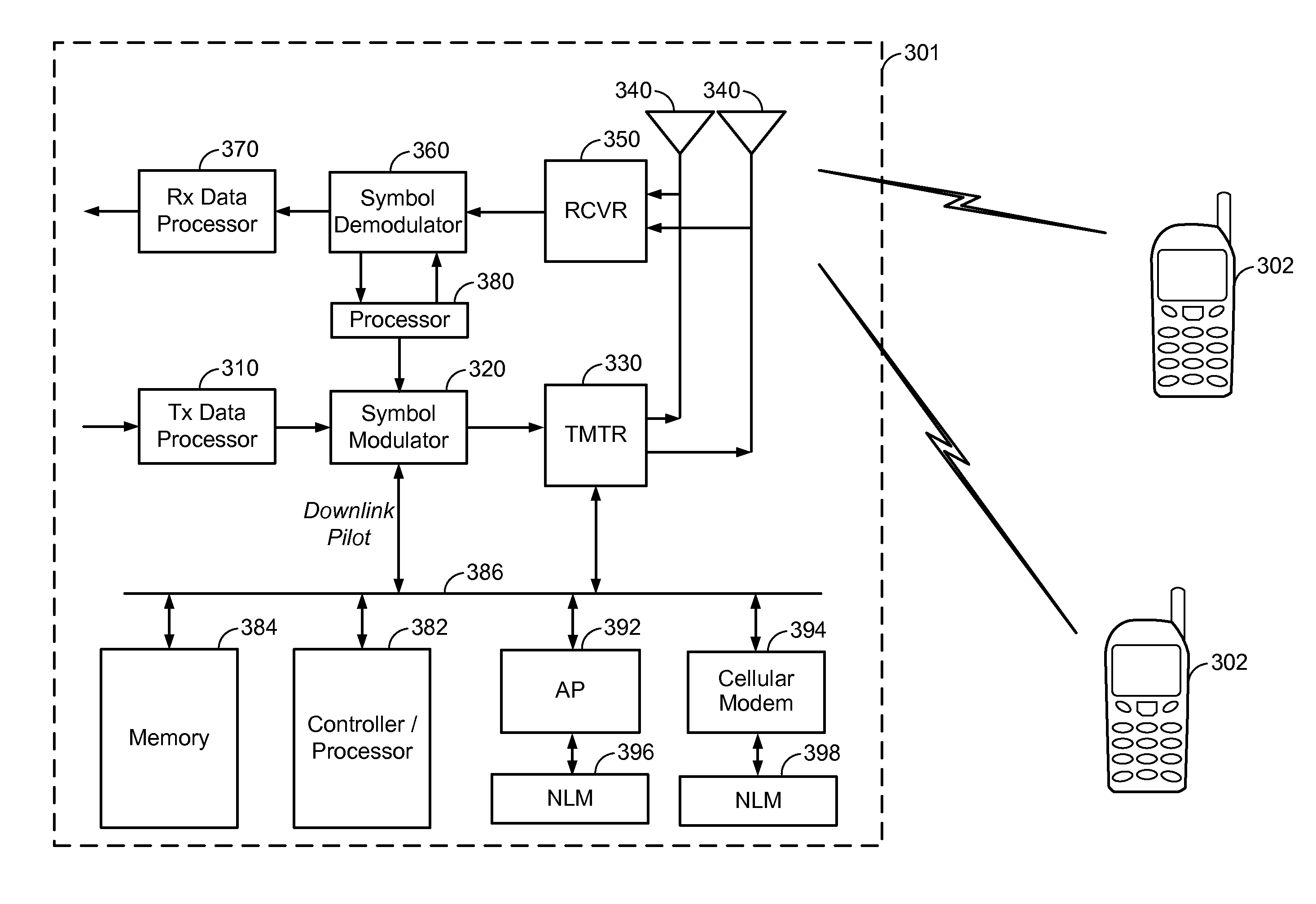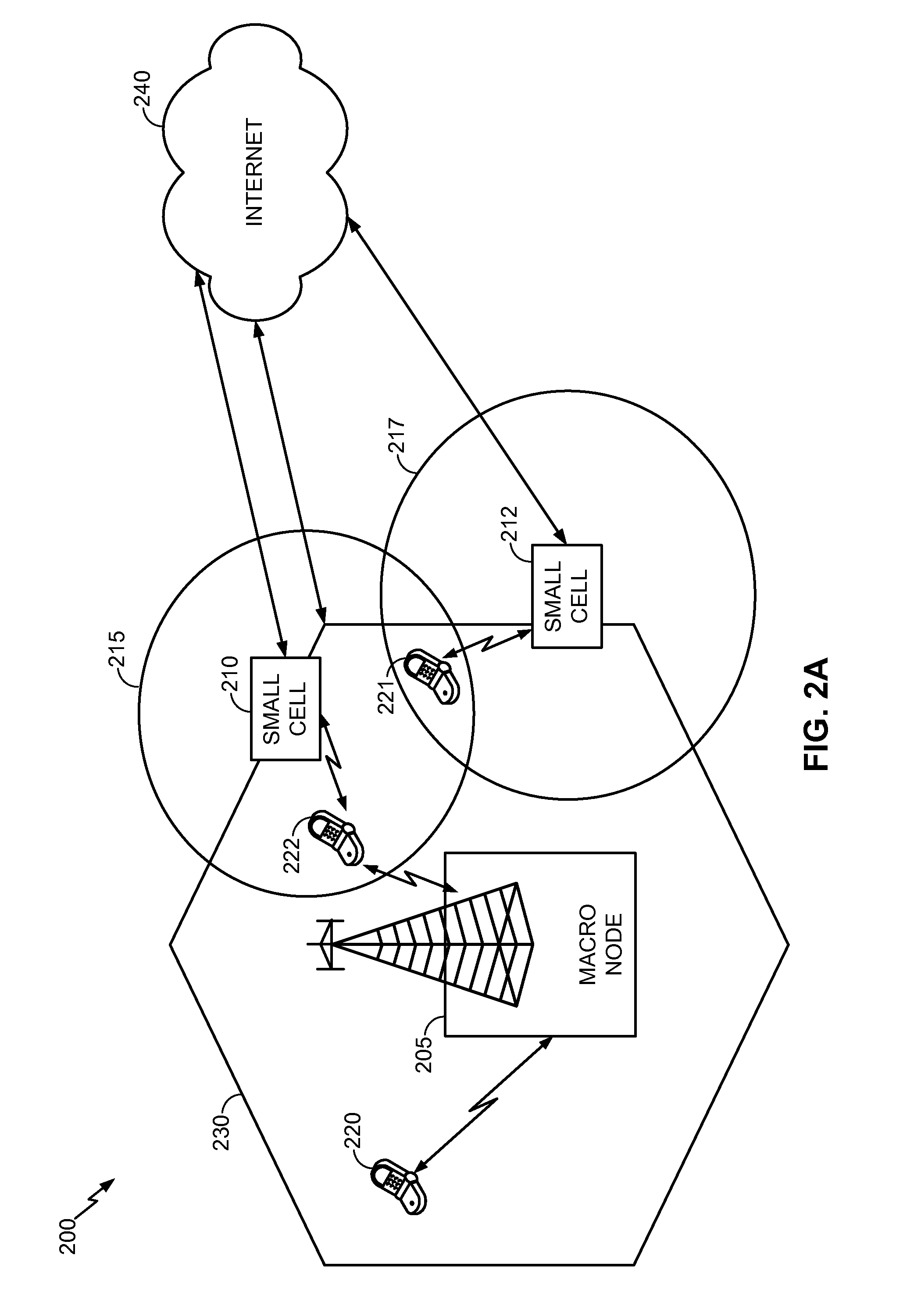Channel selection to reduce interference to a wireless local area network from a cellular network
a wireless local area network and channel selection technology, applied in multiplex communication, wireless commuication services, synchronisation arrangements, etc., can solve problems such as poor user experience, unplanned deployment of large number of small coverage base stations, and inability to fully accommodate channel characteristics, so as to reduce interference, reduce interference, and reduce interference
- Summary
- Abstract
- Description
- Claims
- Application Information
AI Technical Summary
Benefits of technology
Problems solved by technology
Method used
Image
Examples
Embodiment Construction
[0031]The disclosure relates to channel selection to reduce interference to a wireless local area network (WLAN) from a cellular network. A small cell may establish a cellular network, such as a Long Term Evolution (LTE) / LTE Advanced network in unlicensed spectrum, in addition to a WLAN, provided there is a “clean” channel available on which to establish the cellular network. The small cell may determine whether or not a clean channel is available using measurements gathered by its co-located access point (AP), in addition to, or instead of, measurements that its co-located cellular modem, such as a femtocell station modem (FSM), would otherwise gather itself. The AP can provide these measurements to the cellular modem using the small cell's controller / processor and / or internal bus. The measurements may come from the network listen module (NLM) and / or attached user devices. By only establishing a cellular network on a clean channel, the cellular network's interference with the WLAN ...
PUM
 Login to View More
Login to View More Abstract
Description
Claims
Application Information
 Login to View More
Login to View More - R&D
- Intellectual Property
- Life Sciences
- Materials
- Tech Scout
- Unparalleled Data Quality
- Higher Quality Content
- 60% Fewer Hallucinations
Browse by: Latest US Patents, China's latest patents, Technical Efficacy Thesaurus, Application Domain, Technology Topic, Popular Technical Reports.
© 2025 PatSnap. All rights reserved.Legal|Privacy policy|Modern Slavery Act Transparency Statement|Sitemap|About US| Contact US: help@patsnap.com



